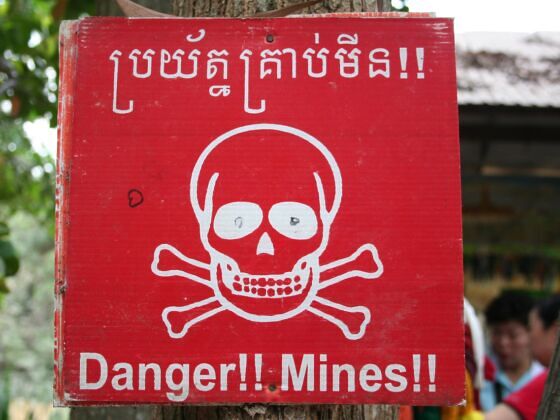INSIDE A DESIGN LABORATORY IN PHNOM PENH, 3D printers run day and night to create safe imitations of some of the world’s deadliest weapons.
The plastic results sit harmlessly on tables and shelves next to their inert — but real — counterparts. There’s a grenade, an M42 cluster munition and a PMN2 landmine, one of the most common found in Cambodia.
